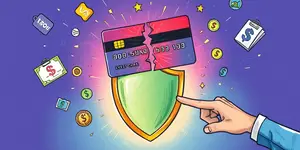
For many individuals, the journey to regain financial stability can feel overwhelming. Secured credit cards offer second chance at credit by providing a tangible way to demonstrate responsible borrowing.
With patience and strategy, these tools can transform your credit profile and open doors to better financial opportunities.
A secured credit card functions almost identically to an unsecured card, but requires an upfront cash deposit that serves as collateral. This deposit typically becomes your credit limit, ensuring the issuer has protection if you fail to make payments.
Because the risk to the lender is diminished, approval is often easier, even for those with limited or poor credit histories.
By targeting these groups, secured cards become a powerful tool to rebuild your financial future.
Every responsible payment you make on a secured card is reported to the three major credit bureaus—Equifax, Experian, and TransUnion. Over time, this consistent reporting fosters a building a positive payment history that underpins your credit score.
Key behaviors include:
In surveys, about 19% of new secured cardholders saw a notable credit score increase, while 38% experienced modest gains. These improvements are most common among credit "establishers" taking their first steps toward financial independence.
Understanding the differences helps in choosing the right option for your needs. Below is a quick comparison of features:
Secured card APRs average around 23.40%, slightly below the 24.80% average for all cards. Rates vary by issuer:
• Banks: Average APR of 25.64%.
• Credit unions: Average APR of 16.08%, capped federally at 18.00%.
While annual fees are uncommon, always review the fee schedule before applying. Credit unions often offer the most competitive terms.
Secured cards aren’t a panacea. Some cardholders experience minimal score improvement if other credit issues persist, such as past-due accounts or collections.
Additionally, secured cards often lack promotional APRs, rewards programs, and tend to feature lower limits than many standard cards. They are designed as temporary stepping stones, not long-term solutions.
As your credit score strengthens, many issuers offer a path to graduate to an unsecured card. Upon meeting criteria—typically six to twelve months of on-time payments—the issuer may refund your deposit and convert your account.
This graduation is a milestone: it signifies that you’ve earned trust in the eyes of creditors and are ready for more traditional credit products.
Currently, there are approximately 3.7 million secured credit cards in circulation, with $817 million in outstanding balances. Two-thirds of major banks and credit unions offer secured card options, but credit unions consistently provide lower APRs.
Hard inquiries from new applications cause a small, temporary score dip, which typically recovers within a few months. Combining secured credit card use with installment loans can further diversify your credit mix and strengthen your profile.
Secured credit cards represent more than just a borrowing tool—they are a bridge to renewed financial confidence. By adopting smart credit habits and leveraging the protections of a deposit-backed card, you can chart a course out of credit challenges.
Embrace this opportunity to lay the bricks of a solid credit history, one on-time payment at a time, and step forward into a future of greater financial freedom.
References













